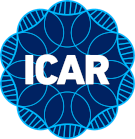Section 20: Proxies
INTRODUCTION
Large-scale measurements of enteric CH4 emissions from dairy cows are needed for effective monitoring of strategies to reduce the carbon footprint of milk production, as well as for incorporation of CH4 emissions into breeding programs. However, measurements on a sufficiently large scale are difficult and expensive. Proxies for CH4 emissions can provide an alternative, but each approach has limitations. Negussie et al. (2019) recently showed the potential of proxies proxies that are easy to record in the farm. These proxies can be gathered in most farms and are a realistic threshold accuracy that can be obtained without more fancy proxies. Several techniques have been developed for the measurement of CH4 emissions from ruminants, with varying degrees of accuracy (see reviews by Cassandro et al., 2013 and Hammond et al., 2016A), but routine individual measurements on a large scale (a requisite for genetic selection) have proven to be difficult and expensive (Pickering et al., 2015; Negussie et al., 2016). Therefore, identifying proxies (i.e. indicators or indirect traits) that are correlated to CH4 emission, but which are easy and relatively low-cost to record on a large scale, is a much needed alternative. Proxies might be less accurate, but could be measured repeatedly to reduce random noise. The (potential) proxies range from simple and low-cost measurements such as body weight, to high-throughput milk MIR, to more demanding measures like rumen morphology, rumen metabolites or microbiome profiling.
Combining proxies that are easy to measure and cheap to record could provide predictions of CH4 emissions that are sufficiently accurate for selection and management of cows with low CH4 emissions.
